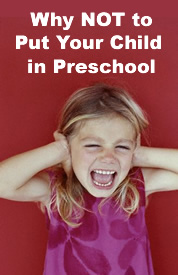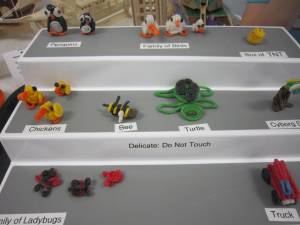Note: This is a classic post that originally appeared on my Home School Enrichment blog several years back. I’ve updated it, hoping it will encourage you. Thanks HSE, for giving permission for me to re-post it!
Have you been thinking: “Here it is, only October, and I already feel like a failure as a homeschooling Mom?” I feel a little like that right now, too.
It seems as though September was nothing but one interruption after another. We had one child struggling with an ongoing illness, along with all the requisite doctor appointments; we had unwelcome guests in our house—two mice—which meant traps, then cleaning and sterilizing; we ALL got miserable colds, and finally, we finished off the month with our annual off-season vacation.
Not enough school has been completed! I already feel “behind”. My plans have been set aside, and my vision for the first month of the school did NOT come true.
What should you do if your year has started like ours? First of all, and especially if you are new to homeschooling: Realize that “some days are like that.” Actually, some months are like that. I always tell new homeschoolers that the hardest part of homeschooling is not the academics—it’s life. It’s dealing with interruptions, illness, errands and laundry. This is a normal part of homeschooling that we all must learn to deal with. If this is your first year of homeschooling, you are probably finding that out.
Another thing you may be learning is the pain of unrealized expectations. They can be heartbreaking. Many homeschoolers, especially new ones, envision the “perfect homeschool”: Cheerful, obedient children who love to learn; a patient, totally organized Mom whose lessons plans are legendary and always completed, and of course, a house that is always perfectly clean and beautifully decorated. It’s hard when our dreams don’t match up with reality.
So what should you do if your year is off to a rough start? Here are some ideas:
-Pray and ask the Lord to renew your enthusiasm about homeschooling. Ask the Lord to give you HIS vision for your homeschool, and the bravery/grace to be able to follow it.
-Take an eternal perspective: Remember that this time at home with your children is just a “blink” compared to eternity. We want our children taught in the way that most benefits their eternity—and that is homeschooling. So we can’t give up!!
-Feel behind? Ask yourself, “Behind WHO?” Remember that the public schools expect too much of young children, and not enough of older children. A realistic goal is steady progress (slow and steady wins the race.) Preschoolers and Kindergarteners need time to build a foundation of basic knowledge about the world, and a wide vocabulary before they are introduced to academics.
-Re-examine your expectations. Are they appropriate? Often new homeschoolers spend TOO much time daily, and expect TOO much from their children—especially YOUNG children.
-Re-examine the readiness issue: Has what you’ve been expecting of your young learner been inappropriate? Is your child resistant? If so, perhaps you need to back off a little.
-Re-examine your routine. Is it appropriate? Does it include plenty of breaks, and time for younger students to play? Do your children have regular bedtimes, and a set time to wake up? Do you? Do you get up and dressed BEFORE your children do? (I admit, I’m still working on that one.)
-Re-examine your thinking processes. Are you “thinking like a homeschooler” or a public-schooler? Are you trying to bring the public school into your home? (I will be posting about “thinking like a homeschooler” soon.)
-Consider shortening your lessons, doing more work orally, and generally “lightening” your load. Charlotte Mason says that short lessons actually build children’s attention spans. After all, it is better to have your child fully engaged and paying attention for a short lesson, than having him squirmy and inattentive for a long lesson. We want our children to look forward to school, so keep them begging for more.
-Consider changing to a year round schedule. A year round schedule allows you to take time off when you need to. You can take time off for family emergencies, illnesses or cleaning days without worry. We take off extra time around the holidays, in exchange for schooling part of the summer (it’s too hot to do anything outside in much of the country, anyway.) During the early years of schooling (K-3), we follow a four day week; Fridays are set aside for catch-up work, park days, field trips, library time, art, messy projects, nature walks, games, life skills, catch up work, and so on (we often can count Fridays as school days, too.)
-Make homeschooling your priority. Schedule everything you can around it. Don’t let the phone or appointments take you away from school time, unless it is absolutely unavoidable. Take the phone off the hook if you need to, or turn off the ringer. Set your cell phone to silent.
-If you haven’t already, take the time to write down the reasons you decided to homeschool in the first place–as well as some basic goals. That way, when you have a tough day (or week), you can re-read them and remind yourself that those reasons haven’t changed. You’ll probably see that your important goals are being met, as well. (These are usually spiritual or behavioral in nature.)
-Plan time for the fun stuff: I know this doesn’t make sense if you feel “behind”; our tendency is to double the school work, instead. Resist that temptation or you and your child will quickly become frustrated and burn out. Instead, plan the time you need to enjoy art and music with your children. Art and music are more than just “extra” subjects; they teach skills vital for young children. Furthermore, they lighten the mood in your home, make learning fun, and give you and your children the opportunity to feel successful.
-Start over: If you are new to homeschooling and feel as if September has been a bust, give yourself a chance to start over. Give yourself grace! Count the days you have already done as “practice”– time to break into your school routine, and get the “kinks” out. Then, start over. That’s right, start over from right where you are, only adding the necessary adjustments.
-Get support: Do you have the support that you need to homeschool? If you haven’t connected with a Christian homeschool support group first, do so right away! Connecting with a Christian support group and participating in the activities/supportive meetings they offer can make the difference between homeschool success and burn-out or giving up. It can even make the difference between sanity and insanity!!
-Finally, remember that whenever God calls us to do something, He always gives us the knowledge, strength and abilities we need to complete the task. Don’t let a rough start make you reconsider your decision to homeschool…don’t give up. Just start over! Implement some of the changes I’ve suggested, and hang in there. It does get easier. It really does, I promise.
© 2010, 2014 Susan Lemons all rights reserved. Copyrighted materials may not be re-distributed or re-posted without express permission from the author.



















